How to Leverage Chatbot Automation Tools Effectively in 2025
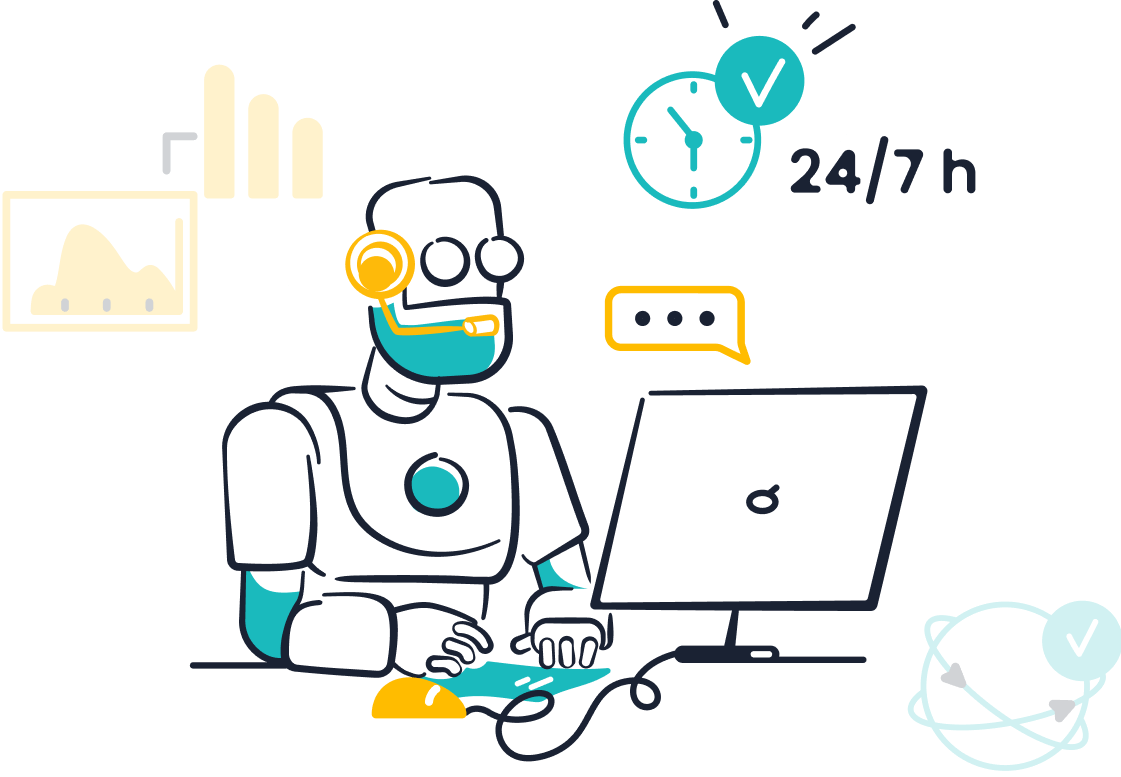
Chatbot automation tools are reshaping how businesses handle customer service and operations in 2025. With chatbots managing up to 70% of service contacts, companies save up to 30% on support costs while boosting customer satisfaction by 30%. These tools also free agents to focus on complex issues, improving efficiency by 50%. Sobot’s chatbot exemplifies this innovation, offering 24/7 multilingual support and automating routine queries. By adopting such automation tools, you can reduce costs, enhance customer experiences, and stay ahead in a competitive market.
What Are Chatbot Automation Tools and Their Relevance in 2025?
Definition of Chatbot Automation Tools

Chatbot automation tools are software solutions that use artificial intelligence (AI) to simulate human-like conversations. These tools automate customer interactions by understanding user inputs, recognizing intent, and delivering accurate responses. They operate across multiple channels, including websites, messaging apps, and social media platforms. In 2025, chatbot automation tools have become indispensable for businesses aiming to streamline operations and enhance customer engagement. For example, Sobot’s AI-powered chatbot offers 24/7 multilingual support, enabling businesses to handle routine queries efficiently without human intervention.
Recent studies reveal that 1.4 billion messaging app users are open to interacting with chatbots. Additionally, 58% of B2B companies and 42% of B2C companies now use chatbot automation tools. These statistics highlight the growing reliance on conversational AI to meet customer expectations.
Why Chatbot Automation Is Essential for Modern Businesses
Chatbot automation plays a critical role in helping businesses stay competitive. It reduces operational costs, improves efficiency, and enhances customer satisfaction. For instance, businesses save up to $8 billion annually by using chatbots, while 64% of consumers value their 24/7 availability. In industries like healthcare, automated appointment booking bots have reduced staffing needs by 35%. Similarly, retail businesses have seen a 15% increase in average order value through product recommendation chatbots.

Sobot’s chatbot exemplifies these benefits by automating repetitive tasks, boosting productivity by 70%, and cutting service costs by 50%. Its ability to integrate seamlessly with existing systems ensures a smooth customer experience, making it a valuable asset for modern businesses.
Key Trends in Chatbot Automation for 2025
The chatbot automation landscape in 2025 is shaped by several key trends:
- Predictive Customer Behavior Analysis: AI chatbots analyze past interactions to predict customer needs, enabling personalized experiences.
- Voice Technology Integration: Voice-enabled chatbots enhance interactions by recognizing emotions and providing tailored responses.
- Sales Pipeline Management: Chatbots streamline lead qualification and automate sales processes, improving efficiency.
- Ethical AI Implementation: Businesses prioritize data protection and ethical AI practices to build trust with users.

These trends demonstrate how chatbot automation tools continue to evolve, offering innovative solutions to meet the demands of a dynamic market.
How Do Chatbot Automation Tools Work?
Core Components of Chatbot Automation
Natural Language Processing (NLP) and AI
Natural Language Processing (NLP) and Artificial Intelligence (AI) form the backbone of chatbot technology. NLP enables chatbots to understand and interpret human language, including slang, typos, and context. AI enhances this capability by learning from past interactions to improve accuracy. For example, Sobot’s chatbot uses NLP to analyze customer queries and AI to deliver precise responses. This combination ensures that your chatbot can handle complex conversations effectively. Metrics like the False Positive Rate and Positive Feedback Rate measure how well these components perform, with lower false positives indicating better understanding and higher feedback rates reflecting user satisfaction.
Machine Learning and Data Analysis
Machine learning allows automated chatbots to adapt and improve over time. By analyzing data from previous interactions, chatbots can predict user needs and provide personalized solutions. For instance, Sobot’s AI chatbots use machine learning to refine their responses, ensuring they meet customer expectations. Data analysis also helps identify trends, such as common customer issues, enabling you to optimize your services. Metrics like the Bot Automation Score (BAS) and Cost per Automated Conversation highlight the efficiency of these systems, showing how they reduce costs while maintaining high performance.
The Step-by-Step Process of Automated Chatbots
User Input and Intent Recognition

When a user interacts with a chatbot, the system first identifies the intent behind the input. This step involves analyzing keywords and context to determine what the user needs. For example, if a customer asks about order tracking, the chatbot recognizes this intent and retrieves the relevant information. Advanced systems like Sobot’s chatbot excel in this area, ensuring accurate intent recognition even in complex queries.
Response Generation and Delivery
Once the intent is identified, the chatbot generates a response using its knowledge base. This response is then delivered through the user’s preferred channel, such as a website or messaging app. Sobot’s chatbot supports omnichannel delivery, ensuring seamless communication across platforms. Businesses like Klarna have seen response times drop from hours to seconds, demonstrating the efficiency of this process.
Integration with Customer Service Systems
Sobot's Chatbot Integration Capabilities
Integrating chatbots with existing customer service systems enhances efficiency and customer experience. Sobot’s chatbot connects seamlessly with CRM and ERP systems, allowing it to access customer data and provide personalized support. This integration reduces service costs by 30% and ensures 24/7 availability. For example, chatbots can automate tasks like order tracking and FAQs, freeing your team to focus on complex issues. By combining automation with human expertise, Sobot helps you deliver exceptional service outcomes.
What Are the Benefits of Using Chatbot Automation Tools?
Cost Efficiency and Resource Optimization
Chatbot automation offers significant cost-saving opportunities for businesses. By automating routine tasks, you can reduce the need for additional staff, saving up to 50% on customer service costs. Automated chatbots handle up to 70-80% of routine inquiries, allowing your team to focus on complex issues. This shift boosts efficiency by 50% and improves overall productivity.
| Cost-Saving Potential | Value |
|---|---|
| Savings on labor costs of a human employee | 100% |
| Increase in agent-redirected chats | 500% |
| Percentage of inquiries fully handled by chatbots | 30% |
| Cost reduction in customer service and sales | 20% |
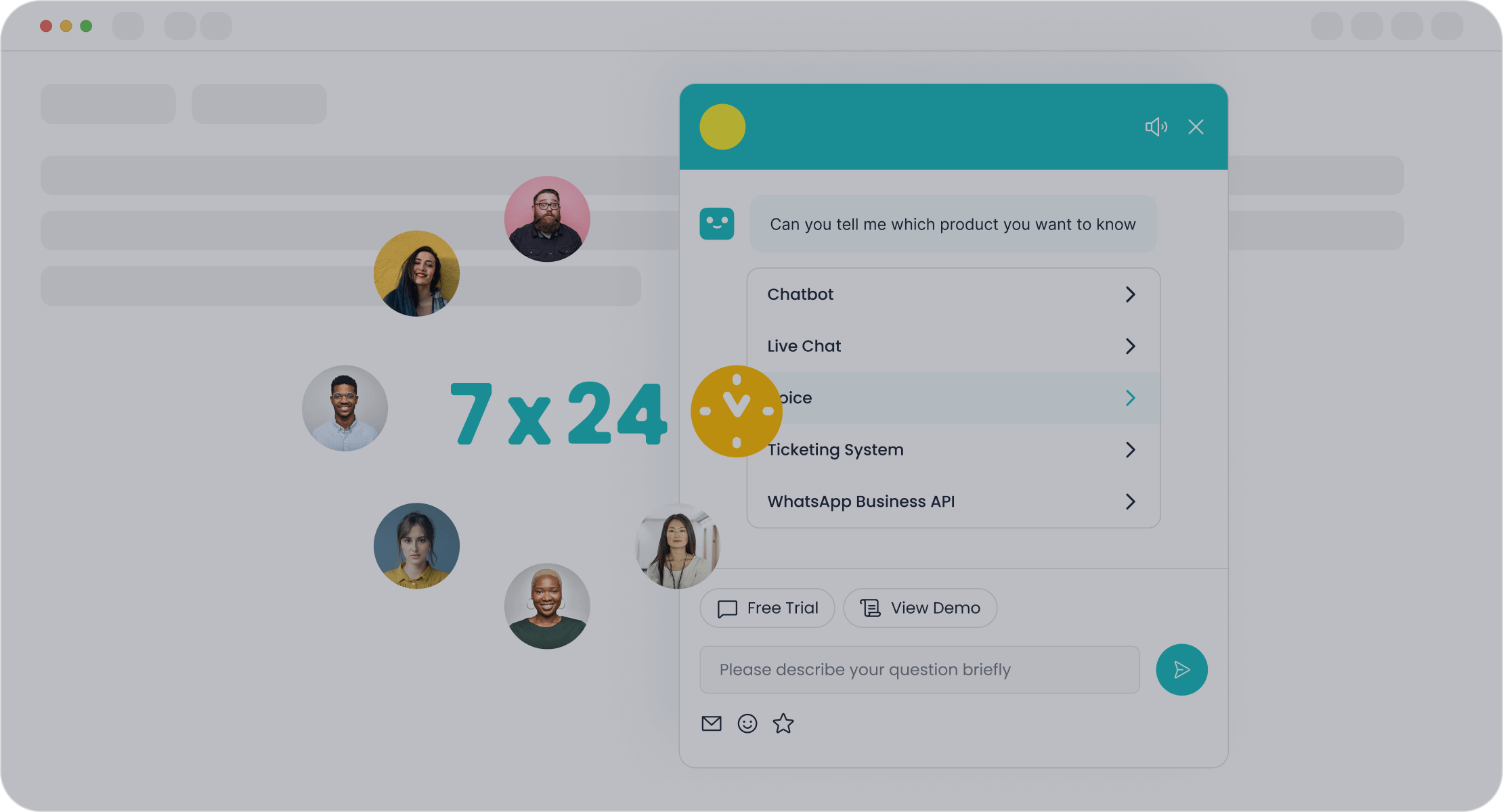
Sobot’s AI-powered chatbot exemplifies these benefits. It operates 24/7, autonomously resolving queries and reducing service costs by 30%. Its no-coding-required setup further minimizes deployment time, saving you valuable resources.
24/7 Availability and Scalability
Unlike traditional customer service methods, chatbots provide uninterrupted support. They operate around the clock, ensuring no downtime in customer interactions. This availability prevents backlogs and enhances customer satisfaction. For instance, 64% of customers value 24/7 service as a key advantage of chatbots.
| Feature | Chatbots | Traditional Methods |
|---|---|---|
| Availability | 24/7 | Limited to business hours |
| Response Time | Instant | Delayed |
| Volume Handling | High volumes simultaneously | Limited by human capacity |
| Cost Efficiency | Significant savings | Higher operational costs |
Sobot’s chatbot scales effortlessly to handle high query volumes without additional costs. Whether you’re managing overnight inquiries or peak shopping periods, automated chatbot support ensures seamless service delivery.
Enhanced Customer Experience and Engagement
Chatbot automation enhances customer experience by providing instant, accurate responses. This immediacy reduces wait times and increases satisfaction rates by 15%. High-performing businesses using AI chatbots report a 25% improvement in task completion rates.
Tip: Engaging chatbots can also boost customer loyalty. For example, Sobot’s chatbot uses proactive messaging and real-time intent recognition to personalize interactions, increasing conversion rates by 20%.
By integrating Sobot’s chatbot into your customer service strategy, you can create meaningful connections with your audience while optimizing engagement.

Data Collection and Insights for Business Growth
Data collection is one of the most valuable aspects of using a chatbot. Every interaction provides insights that help you understand your customers better and refine your business strategies. Metrics like ROI, user engagement rates, and session duration reveal how effectively your chatbot performs and how it contributes to your growth.
| Metric | Description |
|---|---|
| ROI / payback period | Helps you measure the financial benefits of implementing a chatbot compared to its costs. |
| Leads generated | Tracks the number of high-quality leads captured, directly impacting your revenue growth. |
| User engagement rate | Reflects how actively users interact with the chatbot, showcasing its ability to engage customers. |
| Session duration | Indicates the time users spend interacting with the chatbot, offering insights into user interest. |
For example, businesses using chatbots often see enhanced ROI through better analytics and reduced human intervention. This efficiency not only cuts costs but also boosts revenue by directing leads further down the sales funnel. Sobot’s chatbot excels in this area by providing detailed reports on user behavior, helping you make data-driven decisions.
Tip: Use these insights to identify trends, improve customer experiences, and optimize your services. A well-optimized chatbot can transform your business operations and drive sustainable growth.
How Sobot's Chatbot Boosts Efficiency and Reduces Costs
Sobot’s chatbot stands out as a powerful tool for improving operational efficiency while cutting costs. It handles routine queries autonomously, reducing the need for additional staff. Businesses using Sobot’s chatbot have reported a 45% decrease in operational costs. Its ability to manage multiple conversations simultaneously ensures faster response times, which improves customer satisfaction.
For instance, Klarna, a global payments provider, reduced response times from hours to seconds by integrating Sobot’s chatbot. This improvement not only enhanced customer experience but also maintained satisfaction rates above 85%. The chatbot’s 24/7 availability ensures uninterrupted support, even during peak hours.
Additionally, Sobot’s chatbot minimizes infrastructure expenses by automating repetitive tasks. It redirects complex issues to human agents, allowing them to focus on high-value interactions. This balance between automation and human expertise creates a seamless customer service experience.
Note: By leveraging Sobot’s chatbot, you can achieve significant cost savings while maintaining high service quality. Its scalability ensures that your business can handle growing customer demands without additional expenses.
What Are the Most Impactful Use Cases for Chatbot Automation Tools?

E-commerce and Retail
Personalized Shopping Assistance
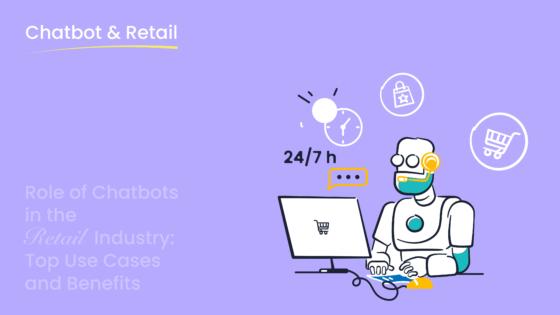
Chatbot automation has transformed the e-commerce landscape by offering personalized shopping experiences. Chatbots analyze customer preferences and browsing history to recommend products tailored to individual needs. For instance, a chatbot can suggest accessories that complement a customer’s recent purchase. This level of personalization increases customer satisfaction and boosts sales. Businesses using automated chatbots in retail have reported a 15% rise in average order value. Sobot’s chatbot excels in this area by providing real-time intent recognition and proactive messaging, helping businesses convert more leads into loyal customers.
Order Tracking and Support
Order tracking is another critical use case in e-commerce. Chatbots provide instant updates on order status, shipping details, and delivery timelines. This eliminates the need for customers to wait for human assistance. For example, Sobot’s customer service chatbot integrates seamlessly with order management systems, ensuring accurate and timely responses. By automating these routine inquiries, businesses can handle high volumes of customer support requests efficiently, reducing operational costs and improving customer satisfaction.
Healthcare
Appointment Scheduling
In healthcare, chatbot automation simplifies appointment scheduling. Patients can book, reschedule, or cancel appointments through a chatbot without waiting on hold. This reduces administrative burdens for healthcare providers and enhances patient convenience. Sobot’s chatbot supports multilingual interactions, making it easier for diverse patient groups to access healthcare services. Studies show that automated appointment scheduling can reduce staffing needs by 35%, allowing healthcare facilities to allocate resources more effectively.
Patient FAQs and Support
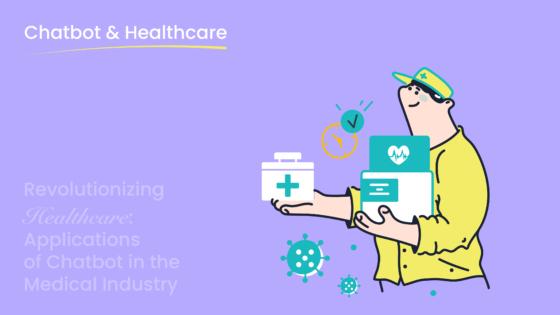
Chatbots also address common patient inquiries, such as medication instructions or symptom checks. This ensures patients receive accurate information quickly, improving their overall experience. For example, a chatbot can guide patients on post-surgery care or provide answers to insurance-related questions. Sobot’s chatbot leverages a robust knowledge base to deliver precise responses, ensuring patients feel supported at every step of their healthcare journey.
Customer Service and Call Centers
Handling High Volumes of Queries
Customer service teams often face overwhelming query volumes, especially during peak periods. Chatbot automation helps manage this load by handling up to 70-80% of routine inquiries. For example, Sobot’s chatbot operates 24/7, ensuring no customer query goes unanswered. This reduces the strain on human agents, allowing them to focus on complex issues. Businesses using chatbots for customer support have reported a 30% reduction in service costs while maintaining high satisfaction rates.
Reducing Wait Times with Automated Chatbots
Long wait times frustrate customers and harm brand reputation. Chatbots eliminate this issue by providing instant responses. For instance, a customer service chatbot can resolve FAQs or troubleshoot basic issues within seconds. Sobot’s chatbot enhances this process with omnichannel support, ensuring seamless communication across platforms like WhatsApp and SMS. This not only improves response times but also boosts customer loyalty.
Financial Services
Fraud Detection and Prevention

Fraud detection is a critical concern in financial services. Chatbots play a vital role in identifying and preventing fraudulent activities. They monitor transactions in real time, flagging unusual patterns or behaviors. For example, if a customer’s account shows multiple failed login attempts, the chatbot can alert the user and temporarily lock the account. This proactive approach minimizes risks and protects sensitive information.
Sobot’s chatbot enhances fraud prevention by integrating with financial systems to analyze transaction data. It uses AI to detect anomalies and notify both customers and support teams instantly. This capability ensures a secure banking experience while reducing the workload on fraud detection teams.
Customer Account Management
Managing customer accounts becomes seamless with chatbot automation. Chatbots assist users with tasks like checking balances, updating personal information, and resetting passwords. These interactions happen instantly, eliminating the need for long wait times.
Sobot’s chatbot excels in account management by providing 24/7 support across multiple channels. It handles routine inquiries, such as account statements or transaction histories, with speed and accuracy. This efficiency improves customer satisfaction and allows financial institutions to focus on more complex services.
How Sobot's Chatbot Supports Diverse Industries
Sobot’s chatbot adapts to the unique needs of various industries, making it a versatile solution. In retail, it enhances shopping experiences with personalized recommendations. In healthcare, it simplifies appointment scheduling and answers patient FAQs. For financial services, it ensures secure transactions and efficient account management.
One notable example is OPPO, a global smart device leader. By implementing Sobot’s chatbot, OPPO achieved an 83% resolution rate for customer queries and a 57% increase in repurchase rates. This success highlights how Sobot’s chatbot drives efficiency and customer satisfaction across industries.
Tip: Explore how Sobot’s chatbot can transform your industry by visiting Sobot’s website.
What Features Should Businesses Look for in Chatbot Automation Tools?
Advanced AI and Machine Learning Capabilities
When choosing chatbot automation tools, prioritize advanced AI and machine learning capabilities. These technologies enable chatbots to understand complex queries, learn from interactions, and deliver accurate responses. For example, platforms like Vertex AI offer tools for managing the machine learning lifecycle, including model registry and feature store. They also provide deep customization options for tailoring AI models to specific business needs.
Sobot’s chatbot leverages AI to improve productivity by 70%. It uses machine learning to refine responses over time, ensuring customer satisfaction. Additionally, its no-coding-required setup makes it accessible for businesses of all sizes.
Key features to look for include:
- Customization Options: Tailor chatbot interactions to meet industry-specific requirements.
- Security Features: Ensure data protection with tools like explainable AI and IP control.
- Omnichannel Support: Maintain consistent customer interactions across multiple platforms.
These capabilities make AI chatbots indispensable for businesses seeking the best automated chatbot solutions.
Multilingual Support for Global Reach
Multilingual support is essential for businesses operating in diverse markets. Chatbots with this feature can communicate with customers in their native language, improving engagement and trust. Studies show that 70% of global consumers prefer interacting with businesses in their own language, and 60% avoid English-only websites when making purchases.
Sobot’s chatbot excels in this area, offering multilingual capabilities that cater to global audiences. It supports seamless communication across languages, ensuring no customer feels excluded. This feature is particularly valuable for industries like e-commerce and healthcare, where clear communication is critical.
| Statistic | Description |
|---|---|
| 81% | Companies find training a single chatbot more difficult than expected. |
| 70% | Global consumers prefer interacting with businesses in their native language. |
| 60% | Consumers rarely or never make purchases from English-only sites. |
By choosing conversational AI tools with multilingual support, you can expand your reach and enhance customer satisfaction.
Seamless Integration with Existing Systems
Integration capabilities determine how well chatbot automation tools fit into your existing workflows. A chatbot should connect effortlessly with CRM, ERP, and other business systems to access customer data and provide personalized support. Metrics like resolution times and customer satisfaction scores highlight the importance of seamless integration.
Sobot’s chatbot integrates with multiple systems, ensuring a unified customer experience. It automates repetitive tasks, reducing operational costs and errors. Businesses using Sobot’s chatbot report faster response times and improved engagement.
| Metric | Description |
|---|---|
| Conversion Rates | Measures the percentage of users who complete a desired action after interacting with the chatbot. |
| Resolution Times | Tracks the average time taken to resolve customer inquiries through the chatbot. |
| Customer Satisfaction Scores | Evaluates user satisfaction with the chatbot's performance and responses. |
| User Engagement | Assesses how actively users interact with the chatbot over time. |
Seamless integration ensures your chatbot becomes a valuable asset, enhancing efficiency and customer experience.
Customization and Scalability Options
Customization and scalability are essential for businesses adopting chatbot automation tools. A well-customized chatbot aligns with your brand voice and meets specific customer needs. For instance, you can tailor responses, workflows, and even the chatbot's tone to reflect your company’s values. This level of personalization enhances customer satisfaction and builds trust.
Scalability ensures your chatbot can handle growing demands without additional costs. During peak times, such as holiday sales, chatbots manage up to 300% more inquiries without requiring extra staff. This capability not only saves costs but also improves service efficiency. Businesses using chatbots report a 30% reduction in customer service expenses and an ROI of up to 200%.
| Platform | Customization | Scalability |
|---|---|---|
| Rasa | Extensive | Self-hosted, requires maintenance |
| Botpress | Moderate | Cloud/Self-hosted, automatic scaling |
| Microsoft Bot Framework | Moderate | Azure/Self-hosted, integrates well |
Sobot’s chatbot excels in both areas. Its no-coding-required setup allows you to customize workflows effortlessly. It also scales seamlessly, handling high query volumes across multiple channels like WhatsApp and SMS. This makes it an ideal solution for businesses aiming to grow without increasing operational costs.
Tip: Invest in a chatbot that offers both customization and scalability to future-proof your customer service strategy.
Analytics and Performance Tracking Tools
Analytics and performance tracking tools are vital for evaluating the effectiveness of your chatbot. Metrics like the Bot Automation Score (BAS) measure how well the chatbot resolves queries without human intervention. A high BAS indicates effective automation, reducing the need for live agents.
Cost per Automated Conversation is another critical metric. It helps you assess the financial efficiency of your chatbot, ensuring you achieve maximum ROI. Businesses often see significant savings when this metric is optimized.
Other key metrics include:
- Engagement Rates: Tracks how actively users interact with the chatbot.
- Conversation Metrics: Measures the quality of interactions, including Goal Completion Rate and Fallback Rate.
- Channel Metrics: Evaluates performance across platforms like websites and messaging apps.
Sobot’s chatbot provides detailed analytics, offering insights into user behavior and system performance. These reports help you identify trends, optimize workflows, and improve customer satisfaction. For example, tracking engagement rates can reveal how well your chatbot captures user interest, enabling you to make data-driven improvements.
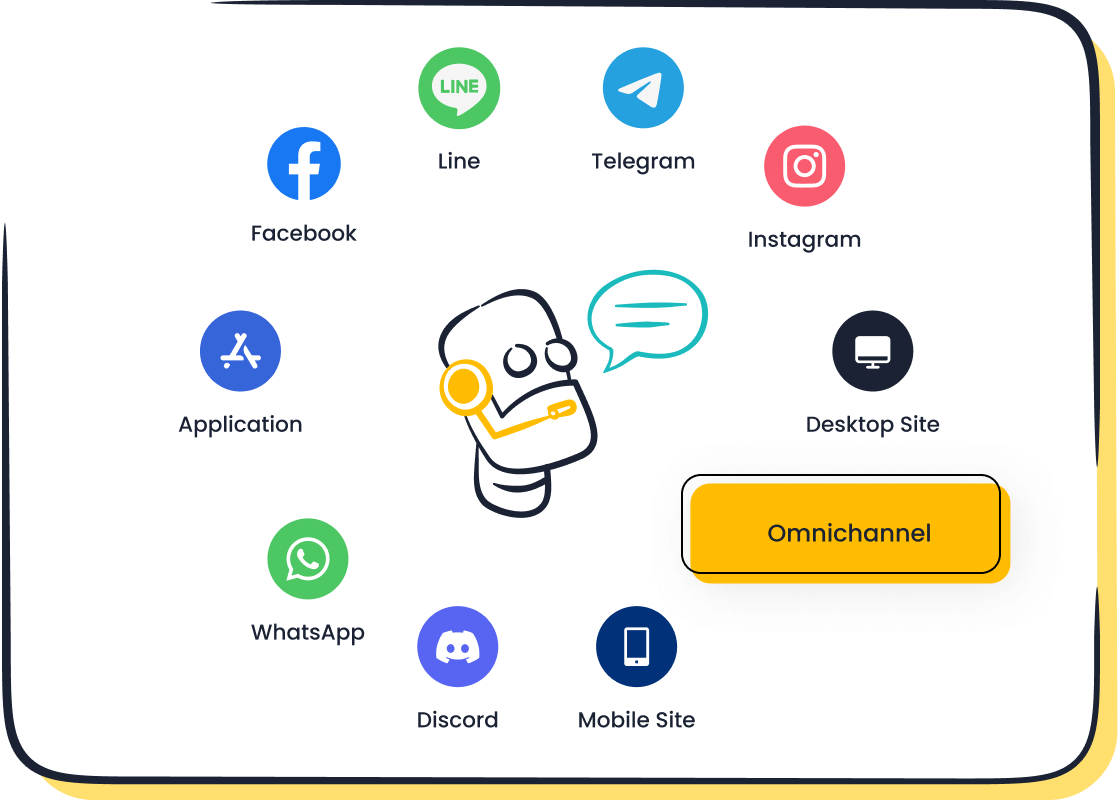
Unique Features of Sobot's Chatbot
Sobot’s chatbot stands out with its advanced features designed to enhance efficiency and customer experience. It offers omnichannel support, allowing seamless communication across platforms like WhatsApp, SMS, and websites. Its multilingual capabilities ensure you can engage with a global audience, breaking language barriers effortlessly.
The chatbot operates 24/7, providing uninterrupted support and reducing wait times. Its AI-driven intent recognition ensures accurate responses, even for complex queries. Additionally, Sobot’s chatbot is easy to set up, requiring no coding experience. Businesses can deploy it quickly using its intuitive point-and-click interface.
One notable example is OPPO, a global smart device leader. By implementing Sobot’s chatbot, OPPO achieved an 83% resolution rate for customer queries and a 57% increase in repurchase rates. This success highlights the chatbot’s ability to drive efficiency and customer satisfaction across industries.
Note: Sobot’s chatbot combines customization, scalability, and analytics to deliver a comprehensive solution for modern businesses.
Best Practices for Implementing Chatbot Automation Tools
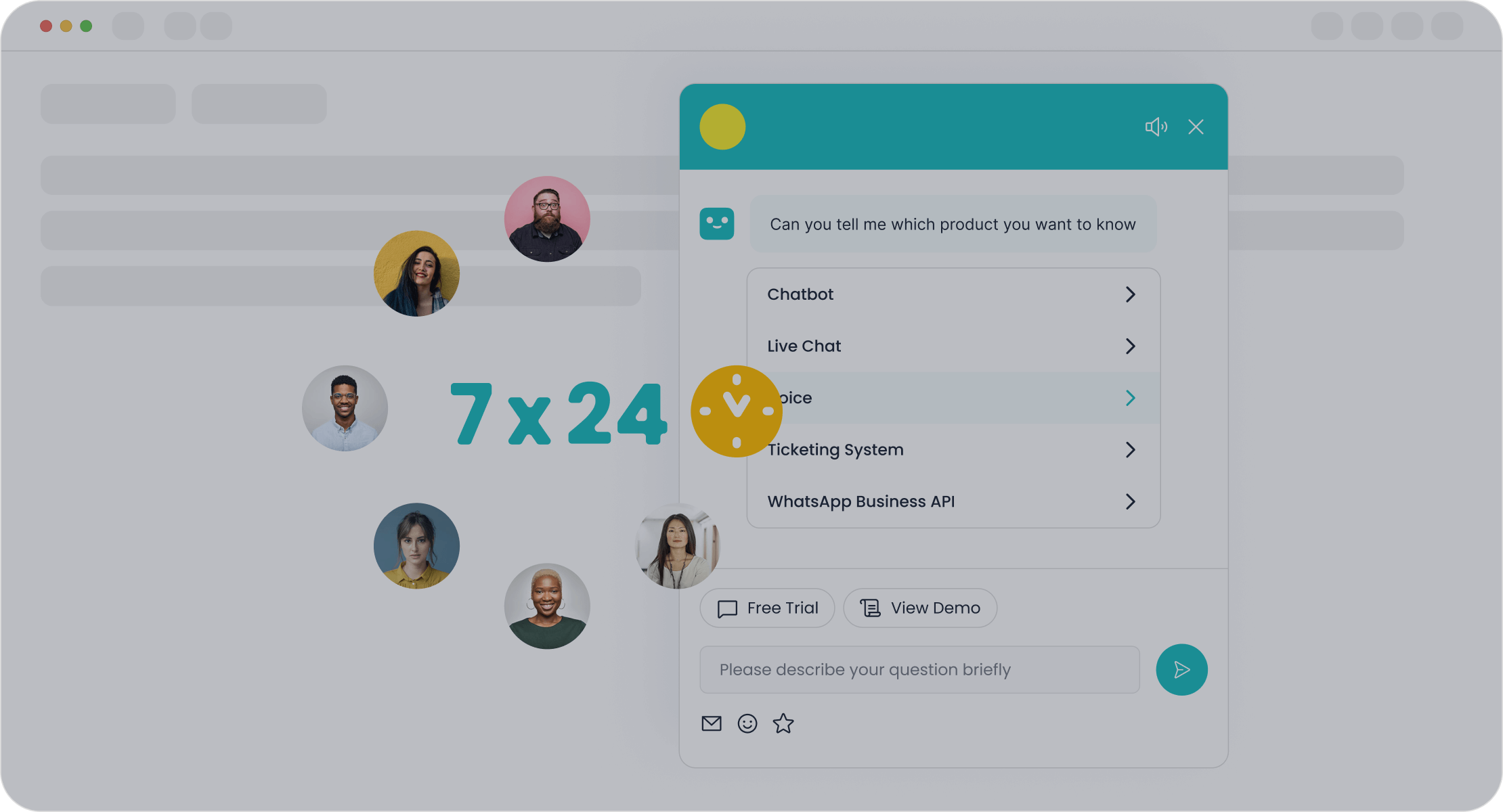
Understand Your Audience and Their Needs
Knowing your audience is the foundation of successful chatbot automation. Start by identifying the demographics, preferences, and pain points of your customers. For example, if your audience includes tech-savvy millennials, they may prefer quick responses via messaging apps. On the other hand, older customers might value detailed explanations through email.
Empathy plays a crucial role in customer service automation. Recent studies show that 86% of consumers feel digital assistants often lack emotional understanding. However, integrating empathetic AI solutions can improve customer sentiment, with 38% of users globally viewing chatbots positively. By tailoring your chatbot to meet these expectations, you can enhance customer experience and build trust.
Tip: Use insights from chatbot interactions to train human agents. This ensures seamless collaboration between automated workflows and live support, creating a balanced approach to customer service.
Choose the Right Chatbot Platform
Selecting the right platform is essential for effective chatbot automation. Look for features like natural language processing (NLP), machine learning, and omnichannel support. These capabilities ensure your chatbot can handle complex queries, learn from interactions, and provide accurate responses across multiple channels.
| Metric | Description |
|---|---|
| Self-Service Rate | Frequency of completed conversations without needing a second-tier call center. |
| ROI / Payback Period | Measures return on investment, comparing bot benefits with costs. |
| Leads Generated | Important for sales chatbots, indicating the quality and quantity of leads captured. |
| User Engagement Rate | Proportion of users interacting with the chatbot, indicating user activity. |
| Missed Utterances | Instances where the chatbot fails to understand user input, highlighting areas for improvement. |
| Session Duration | Length of time users spend interacting with the chatbot, indicating depth of engagement. |
Sobot’s chatbot excels in these metrics, offering customizable dashboards and actionable insights. Its multilingual support and no-coding-required setup make it accessible for businesses of all sizes.
Test and Optimize Chatbot Performance
Testing ensures your chatbot performs as expected. Begin by simulating real-world scenarios to evaluate its accuracy and responsiveness. Focus on metrics like goal completion rate, customer satisfaction score (CSAT), and conversion rate.
- Monitor missed utterances to identify areas where the chatbot struggles to understand user input.
- Analyze session duration to gauge user engagement and refine responses accordingly.
- Use real-time insights to optimize automated workflows and improve customer service outcomes.
Regular optimization keeps your chatbot aligned with evolving customer needs. For instance, Sobot’s chatbot provides detailed analytics, helping you track performance and make data-driven improvements.
Note: Testing isn’t a one-time process. Continuously monitor and refine your chatbot to ensure it delivers consistent value to your customers.
Monitor Metrics and Continuously Improve
Monitoring performance metrics is essential for ensuring your chatbot delivers consistent value. Start by establishing clear benchmarks to evaluate its effectiveness. Key metrics include user satisfaction, resolution rate, and response accuracy. For example, post-interaction surveys can measure satisfaction, while resolution rates reveal how often the chatbot resolves queries without human help.
Regularly reviewing these metrics helps you identify areas for improvement. Analyze conversation logs to spot recurring issues or successful patterns. For instance, if users frequently ask the same question, updating the chatbot’s knowledge base can enhance its accuracy. Tracking engagement trends, such as repeat usage or average conversation duration, also provides insights into user behavior.
Data-driven feedback ensures your chatbot evolves to meet customer needs. Sobot’s chatbot, for example, uses analytics to refine its responses over time. This iterative approach not only improves efficiency but also boosts customer satisfaction. By continuously optimizing your chatbot, you can maintain high performance and adapt to changing demands.
Train Your Team to Work Alongside Chatbots
Your team plays a crucial role in maximizing the benefits of chatbot automation. Training them to collaborate effectively with chatbots ensures seamless operations. Begin by educating your staff on the chatbot’s capabilities and limitations. This knowledge helps them understand when to intervene in conversations.
Encourage your team to view the chatbot as a partner rather than a replacement. For instance, while the chatbot handles routine queries, agents can focus on complex issues requiring human empathy. Sobot’s chatbot excels in this area by redirecting unresolved queries to live agents, ensuring a smooth transition.
Provide ongoing training to keep your team updated on new features or workflows. Role-playing exercises can help agents practice scenarios where they collaborate with the chatbot. This preparation ensures your team feels confident and empowered, leading to better customer experiences.
How Sobot Ensures Successful Chatbot Implementation
Sobot’s approach to chatbot implementation focuses on delivering measurable results. Case studies highlight its success across industries. For example, Klarna reduced response times and achieved high customer satisfaction scores by integrating Sobot’s chatbot. Similarly, The Green Garden significantly lowered operational costs while enhancing efficiency.
| Case Study | Key Metrics | Outcomes |
|---|---|---|
| Klarna | Reduced response times, high customer satisfaction scores | Cost savings, improved customer service |
| The Green Garden | Significant reductions in operational costs | Enhanced customer experience and efficiency |
Sobot ensures success by offering customizable solutions tailored to your business needs. Its chatbot integrates seamlessly with existing systems, providing omnichannel support and detailed analytics. These features enable you to track performance, optimize workflows, and achieve long-term growth.
Tip: Partnering with Sobot guarantees a smooth implementation process, helping you unlock the full potential of chatbot automation.
Chatbot automation tools have become essential for businesses aiming to stay competitive in 2025. These tools, like Sobot's chatbot, streamline operations, reduce costs, and enhance customer satisfaction. By understanding their functionality and adopting best practices, you can unlock their full potential.
The future of chatbot automation looks promising, driven by advancements in AI and machine learning. The global chatbot market is projected to grow from $10.7 billion in 2023 to $29.8 billion by 2028, with a compound annual growth rate (CAGR) of 22%. Additionally, the number of businesses using AI chatbots is expected to increase by 34% by 2025.
| Statistic | Value | Year |
|---|---|---|
| Market size in 2023 | $10.7 billion | 2023 |
| Projected market size in 2028 | $29.8 billion | 2028 |
| Increase in businesses using chatbots | 34% | 2025 |
By leveraging tools like Sobot's chatbot, you can position your business for long-term success in this rapidly evolving landscape.
FAQ
What is the main purpose of chatbot automation tools?
Chatbot automation tools aim to streamline customer interactions by automating routine tasks. They improve efficiency, reduce costs, and enhance customer satisfaction. For example, Sobot’s chatbot handles up to 70% of inquiries autonomously, saving businesses up to 50% on operational costs.
Can chatbots handle complex customer queries?
Yes, advanced chatbots like Sobot’s use AI and machine learning to understand complex queries. They analyze user intent and provide accurate responses. If needed, they seamlessly transfer unresolved issues to human agents, ensuring a smooth customer experience.
How do chatbots improve customer satisfaction?
Chatbots provide instant, 24/7 support, reducing wait times and resolving issues quickly. Sobot’s chatbot, for instance, boosts satisfaction rates by 30% through proactive messaging and personalized interactions, creating a seamless and engaging experience for users.
Are chatbot automation tools suitable for small businesses?
Absolutely! Chatbots like Sobot’s are scalable and customizable, making them ideal for businesses of all sizes. Their no-coding-required setup ensures easy deployment, while their cost-saving features help small businesses optimize resources and improve customer service.
How can I measure the success of my chatbot?
Track metrics like resolution rate, customer satisfaction score, and cost per automated conversation. Sobot’s chatbot provides detailed analytics, helping you monitor performance and make data-driven improvements to maximize ROI and customer engagement.
See Also
Simple Ways to Integrate Chatbots on Your Website
Tips for Selecting the Ideal Chatbot Software Solution
Steps to Build a Successful Chatbot for Your Site